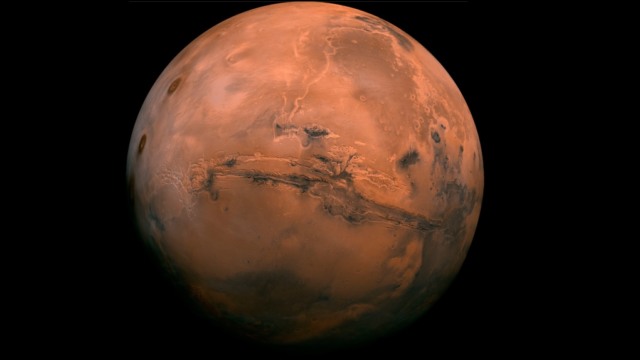Mars Lander detected “marsquakes” and a weird glow in the Martian night sky. The Red Planet continues to fucking rock!
A series of studies in Nature Geoscience and Nature Communications has summarized some of the rad-ass findings by the Mars Lander. We’re talking dust devils! We’re talking marsquakes! A weird glow in the night sky!
Vice:
Mars is home to eerily spectral dust devils, a weird glow in its night sky, and interior tremors that reveal it as a geologically active planet. Those are some of the key discoveries made by NASA’s InSight lander, which are outlined in a batch of six studies published on Monday in Nature Geoscience and Nature Communications.
“We’ve finally, for the first time, established that Mars is a seismically active planet,” said Bruce Banerdt, the principal investigator of the InSight mission, in a teleconference held on Thursday. “The seismic activity is greater than that of the Moon, which was measured back during the Apollo Program, but less than Earth.”
Detecting tremors on Mars, which are known as marsquakes, is the central objective of the InSight mission. The lander has delivered on that goal by recording 174 different seismic events within a period of 235 Martian days, using an advanced instrument called the Seismic Experiment for Interior Structure (SEIS).Most of the marsquakes produced high-frequencies that were similar to the shallow ground shakes that Apollo missions detected on the Moon. But 24 of the tremors created lower frequency signatures that hint at ongoing tectonic activity inside Mars, which is an essential clue about the interior structure and evolution of the planet.
But while InSight’s main focus is what is happening inside Mars, it has also racked up new discoveries about the Martian surface and atmosphere, including a strange glow in the night sky.
Researchers led by Don Banfield, a principal research scientist at Cornell University who leads InSight’s weather science team, describe this faint nocturnal skylight in one of the studies published in Nature Geoscience.
The effect, which is caused by photochemical reactions in the atmosphere, was previously predicted but had not been directly confirmed before, according to Banfield’s study. Fortunately, InSight’s Instrument Deployment Camera has excellent night vision, which enabled it to detect the airglow.
“We do a pretty good job with capturing dark sky images on InSight, slightly better than its predecessors’ cameras,” Banfield said in a phone call.
In order to tune out all of the background noise caused by winds and atmospheric changes on Mars, the lander is also equipped with extremely sensitive meteorological sensors that can keep tabs on tremors that are not related to marsquakes.“We needed to send, on InSight, a really good set of meteorology instrumentation so that we could remove that stuff from the seismology and seismometry and be able to have a cleaner picture of what is going on,” explained Banfield.
“Consequently we have, in a lot of ways, the most capable meteorology sensors that have been sent to Mars, ever,” he added. For instance, the mission’s pressure sensors are 20 times faster and more sensitive than its predecessors, and the performance of its wind sensors are only matched by the instruments used on NASA’s Mars Viking landers, which touched down in the 1970s.
This level of meteorological precision has exposed new puzzles about surface and atmospheric dynamics on Mars, which may actually affect its seismic activity. For instance, last summer, mission leads noticed that a spike of high-frequency marsquakes coincided with seasonal changes in windiness, suggesting that some marsquakes may be influenced by the seasons.
“On Earth, you don’t worry too much about seasonal changes in seismicity and that’s probably true mostly on Mars,” noted Banfield.
“But some of these particular signals that we’re seeing seismically may, in fact, be caused by some interaction of the atmosphere and the ground, so watching how they change over seasons will be interesting,” he said. “Exactly what is going on to cause that, we don’t know, and we won’t know until we get another Mars year there.”
The team also encountered “a paradox of aeolian science on Mars,” as it is described in the study. Despite abundant evidence of dust devils near the lander, both from the ground and space, InSight’s cameras have oddly not been able to image these mysterious Martian whirlwinds, which are also called vortices.
“We almost certainly have imaged a lot of these vortices but for whatever reason they don’t appear to be opaque, or not opaque enough that we can see them,” Banfield said. “It’s quite the mystery.”
To that point, the mission leads are looking forward to completing a full Martian year with the lander, and hopefully continuing the mission indefinitely. The more time the lander has to gather data on Mars, the closer we will get to resolving all of the new questions it has raised about the red planet.
“The instrumentation is all working tremendously well,” Banfield said. “There’s no reason to think that InSight can’t continue for a long time to come. Just as any geophysical network on Earth, you learn more the more earthquakes you study. So, InSight should be able to learn more about the interior of Mars if we continue to gather more Marsquakes.”




